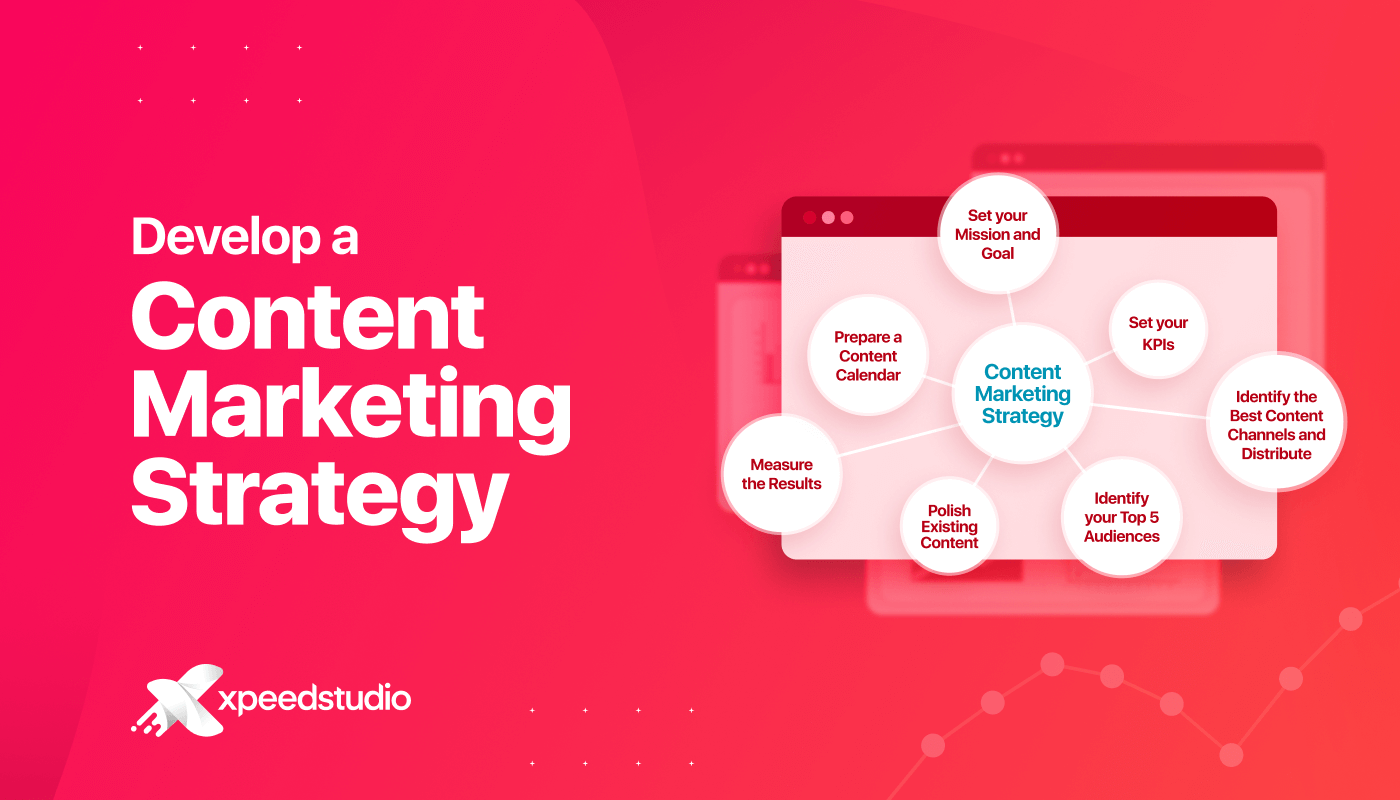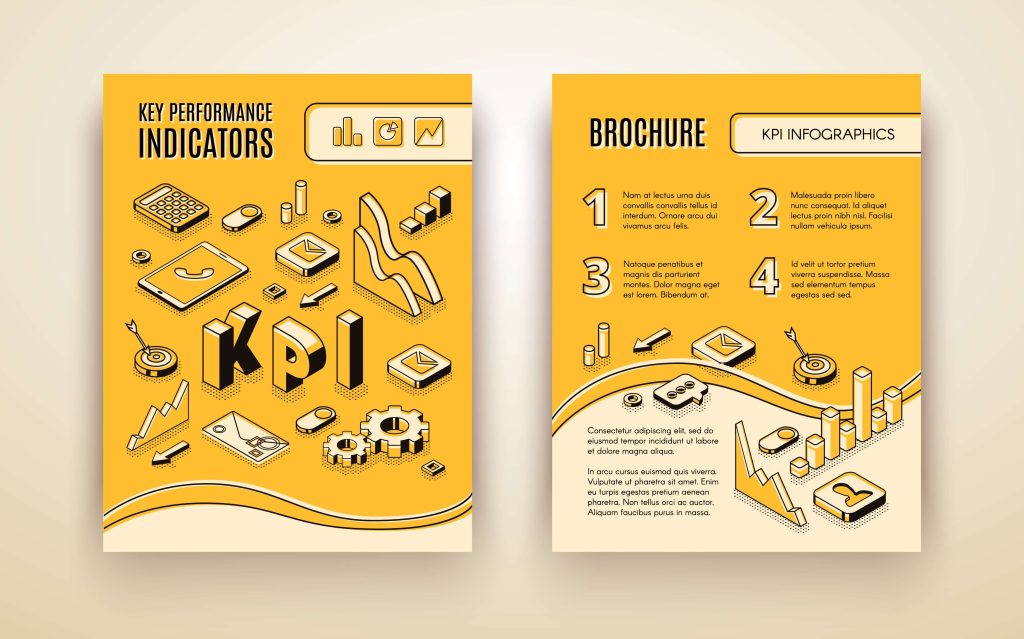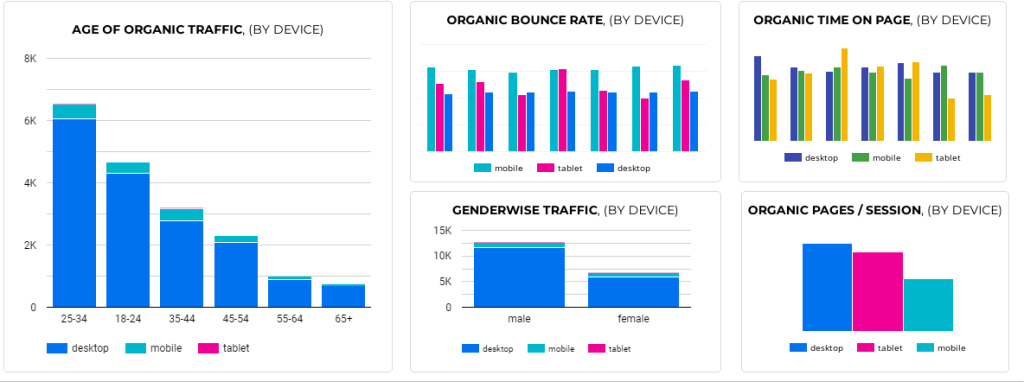7 Killer Steps to Create Content Marketing Strategy

In the era of the Internet, content is something that we all are familiar with, more or less. Every day, when we visit ample sites, we come across different forms of content. These types of content incorporate both text and visual content. Content is so powerful these days that you can avail it for faster growth of your business.
If you create digital content for your business, it’s very crucial to market them fruitfully. Otherwise, the value of your content is close to zero. Plenty of online platforms exist through which you can promote your business.
But to carry out content marketing, you must develop a robust and effective content marketing strategy. In this blog post, I will dilate upon 7 key steps to creating a content marketing strategy. But prior to that, let me give you an overview of content marketing.
In case you are curious to know about content management systems, refer to the blog below-
Content Marketing:
Content marketing is the subsequent step after content creation. It’s a process of organizing, scheduling, and promoting a piece of content to reach out to the target audience. But that’s not the final goal of content marketing. Once you reach out to your target audience, you have to mesmerize and nudge them to take action.

Content marketing is entirely reliant on content strategy. In your content strategy, you will define all the essential points related to your content like content timeline and other factors. Based on the content strategy, you will lay out your content marketing plan. Let me list out the components of content strategy with examples below-
- What types of content you will create- Text, video, infographics, illustration, etc.
- Who are your target audience- Ecommerce businesses, web developers, photographers, freelancers, etc.
- What are you going to achieve with your content- Sales, newsletter subscription, form sign-up, engagement, etc.
- How your content will endorse and promote your brand- Listicles, tutorials, etc.
- Success-defining metrics- Website traffic, engagement, conversion and sales, etc.
In a word, content strategy is like a destination while content marketing is your journey to the destination. Once you know your destination, you can plan your journey accordingly. You can decide the medium and path to get to your destination.
Why Develop a Content Marketing Strategy
Any campaign you think to do, you need a holistic strategy or plan upfront. The same goes for content marketing as, without a prior strategy, your campaign will go off track. To carry out content marketing, you will take tons of steps and they need to be strategized.
Let me catalog some of the benefits you will notch up by developing a content marketing strategy-
- A crystal-clear blueprint guiding you on what to do one-by-one
- Ramps up your content marketing productivity
- Maximizes your business ROI
- Enables to address customer pain points
- Eases the process of understanding customers’ approach in the conversion funnel
Content marketing campaign through a website is one of the strongest mediums you can leverage. If you have a WordPress site built with Elementor, take advantage of ElementsKit to spice up your website.
WordPress is the most popular content management system. Get to know the top chart plugins of this CMS by clicking the link below
How to Create Content Marketing Strategy
Now, we have come to the core part of the write-up and that’s the steps to develop a content marketing strategy. I have come up with 7 proven and striking steps to develop a content marketing strategy. By implementing them, you are likely to click with your content marketing campaign.
Let’s cut to the chase…
Set and Document your Mission and Goal:
To start off, you have to set your content marketing objective. I mean, what do you want to achieve by running your content marketing campaign? Is it to generate leads, build relationships with clients, improve client experience, or generate sales? Set the target and document it in your content marketing goals.

Besides, you can also outline a mission statement and incorporate key points like your target audience, the content type you will use, and the benefits they will notch up from your content. Let’s take a look at some of the common goals businesses try to achieve with a content marketing strategy-
- Higher revenue generation
- Website traffic boost
- Social media engagement streamlining
- Marketing cost-cutting
- Business branding
Set and Establish your KPIs:
Setting key performance indicators lets you know if you have achieved the goals you planned while starting your campaign. KPIs are quantifiable and provide you with a crystal-clear set of data, conducive to strategizing your content marketing campaign.

KPIs will demonstrate what you wish to attain in terms of sales, revenue, traffic, SEO, and other facets of digital marketing like email marketing, social media marketing, etc. Typically, KPIs boast numerical metrics. Let me list out some of the KPI metrics with a few points below-
- Hitting $10M revenue in 6 months
- Generating 50K website traffic in 1 year
- Getting 100K signups for your lead magnet in a given period
- Targeting to rank specific keywords in Google SERP in a certain period
- Getting a certain number of email and newsletter subscription
- Achieving a specific number of social media engagement
Figure out your Top 5 Audiences:
When you prepare your content, it’s no doubt meant for certain quarters. It can be for ecommerce businesses, freelancers, photographers, or a combo of different types of audiences. It’s very salient that you identify your target audiences beforehand.

After identifying your top 5 audiences, segment them as per your priority. Besides looking at their demographics, also emphasize their psychographics to cater to them in the best possible way.
Additionally, avoid leveraging stock photos and take advantage of icons and symbols to get rid of the hassles of race, age, and gender.
Prepare a Content Calendar:
Having a content calendar as part of your content marketing strategy is extremely crucial. It’s never wise to proceed with your content marketing campaign without an organized plan. Preparing a content calendar can assist you to organize your content marketing roadmap.

A myriad of content types you can include in your content calendar like blogs, videos, webinars, podcasts, social media posts, and so on. For special attractions, you can keep binge-worthy and one-time special programs in your content calendar.
With regard to the tool, you can avail of Google calendar or Google Sheets to prepare your content calendar. Both these are perfect tools for preparing a content calendar at an ease.
Polish Existing Content:
We talk about developing content every now and then. But once you have a heap of content in your repository, it’s also crucial to update and polish them regularly. Instead of overloading your marketing plan with redundant content, audit your existing content and fix the arising issues.

Once you fix the issues, leverage them in a profitable way like repurposing content, curating content, atomizing content, etc. In this way, you can derive an abundance of benefits from your old and reusable content.
Research Audience Requirements:
If you don’t have an idea about what your target audience is looking for, there are high chances that your content wouldn’t benefit them. Then, your time, efforts, and plan, all will go in vain. Hence, carry out market analysis and catalog the needs of your audiences.

One of the best ways to fathom the wants and needs of your target audience is by diving into community groups, forums, and social media channels. You can visit the relevant groups on these platforms and find out the questions they frequently ask.
Based on that, you can grasp the requirements of your audience and prepare your content marketing plan.
Identify the Best Content Channels and Distribute them:
A number of channels exist where you can run your content marketing campaigns. A raft of social media platforms are there from which you can cherry-pick the ones that will create more reach and engagement. You can consider email campaign which is also a fruitful medium for content marketing.

On top of that, guest blogging is another effective way that you can utilize to promote your content. However, it’s vital to conduct in-depth research about the sites you approach for guest blogging. This is because the sites you choose to run content marketing need to be relevant with good monthly traffic.
Once you are done with the identification, start distributing them straightaway. For a social marketing plan, schedule your content to publish at different times, especially at peak hours. For email campaigns, start dispatching them to your subscribers. And if you mention any influencers in your content, ping them to circulate your content.
Measure the Results:
Now, you are at the last stage of your entire content marketing strategy. Yes, you are done and dusted with your content marketing efforts. Now, it’s time to track the result. You may be wondering how to gauge the results! For that, you have to go back to the KPIs that you set at the outset.

You have to figure out if the traffic, signups, subscriptions, conversions, and sales have hit the target you set. If you wanted to achieve 50K traffic after 6 months, it actually happened or not. To track these pieces of data, you can deploy several tools.
You can deploy Google Analytics to track your content performance. The tool will provide you with metrics like page views, bounce rate, etc. of your blog posts. However, if you want to assess the number of social shares of your content, you can avail of BuzzSumo. The tool will display sharers of your content as well.
Final Words
Content is ruling the world now and there is no doubt about it. If you google a particular topic, you get thousands of results for it on the SERP. Why? Because a plethora of content has been created on it and the likes of it. However, not all the content existing on the Internet gets views and traffic.
That’s why it’s very salient that you come up with an effective content marketing strategy. You have to map out each and every step of your content marketing campaigns.
To guide you and reduce your efforts, I have rounded up 7 fruitful content marketing strategies above. Hopefully, your content marketing campaign will work out if you follow these strategies, no matter whether you run a WooCommerce store or any other platform.
As a matter of fact, if you think of building a WordPress site with Elementor for running your content marketing campaign, I recommend you to make use of ElementsKit, an all-in page builder for Elementor.
Answering questions of your site visitors is part of content marketing. Some of the common questions you can answer on your site through the FAQ section. Get familiar with the best WordPress FAQ plugins underneath-
